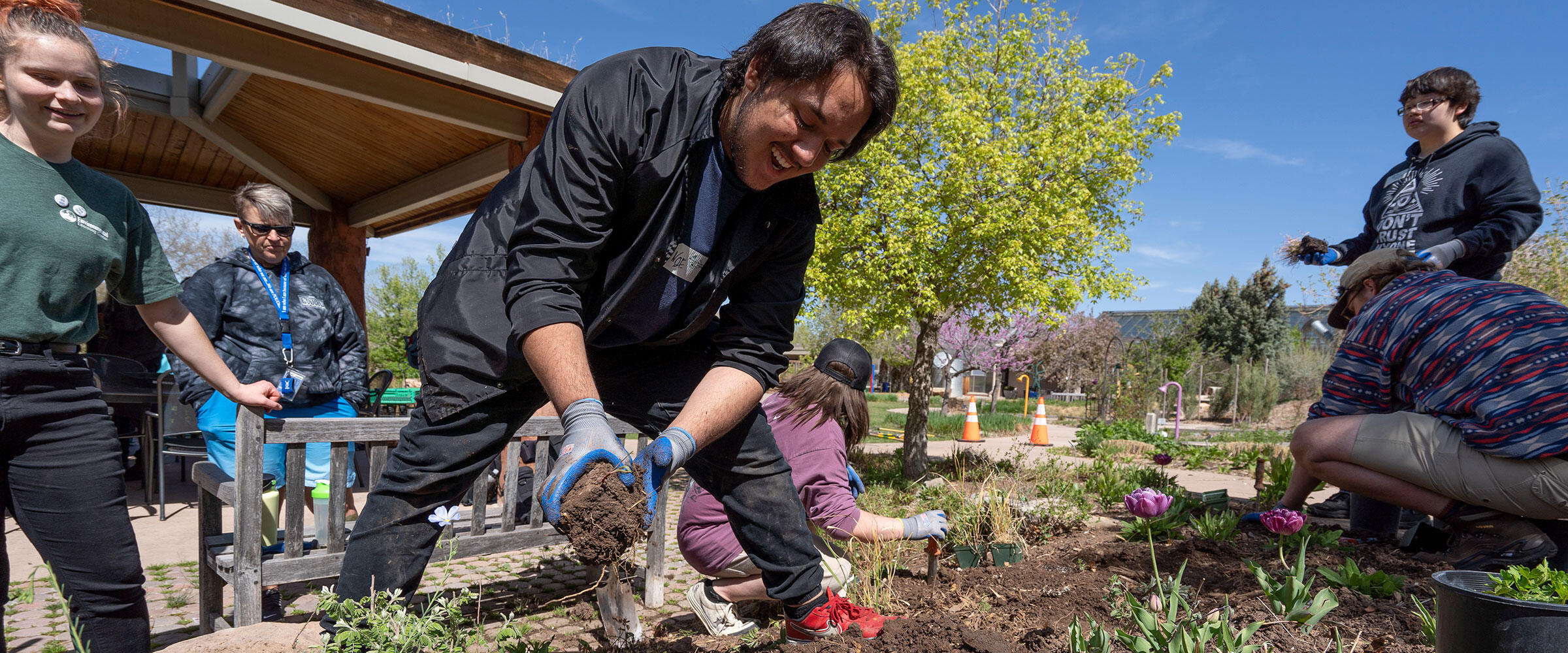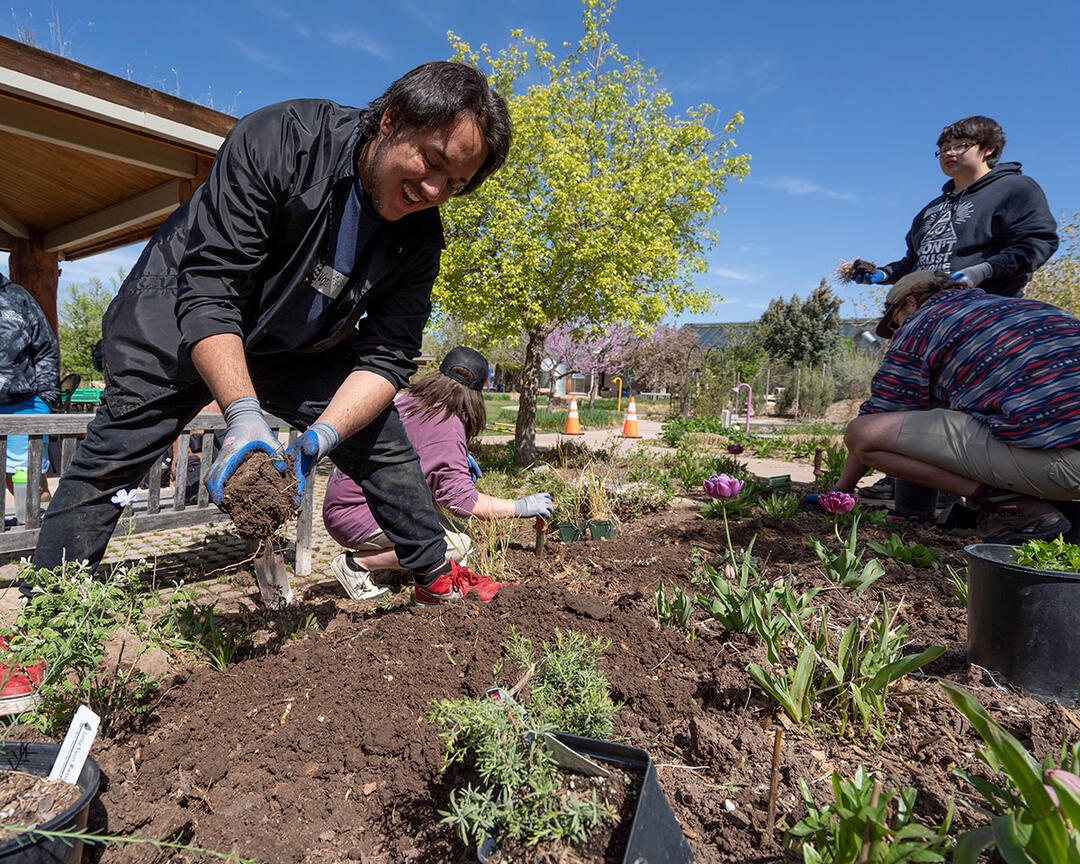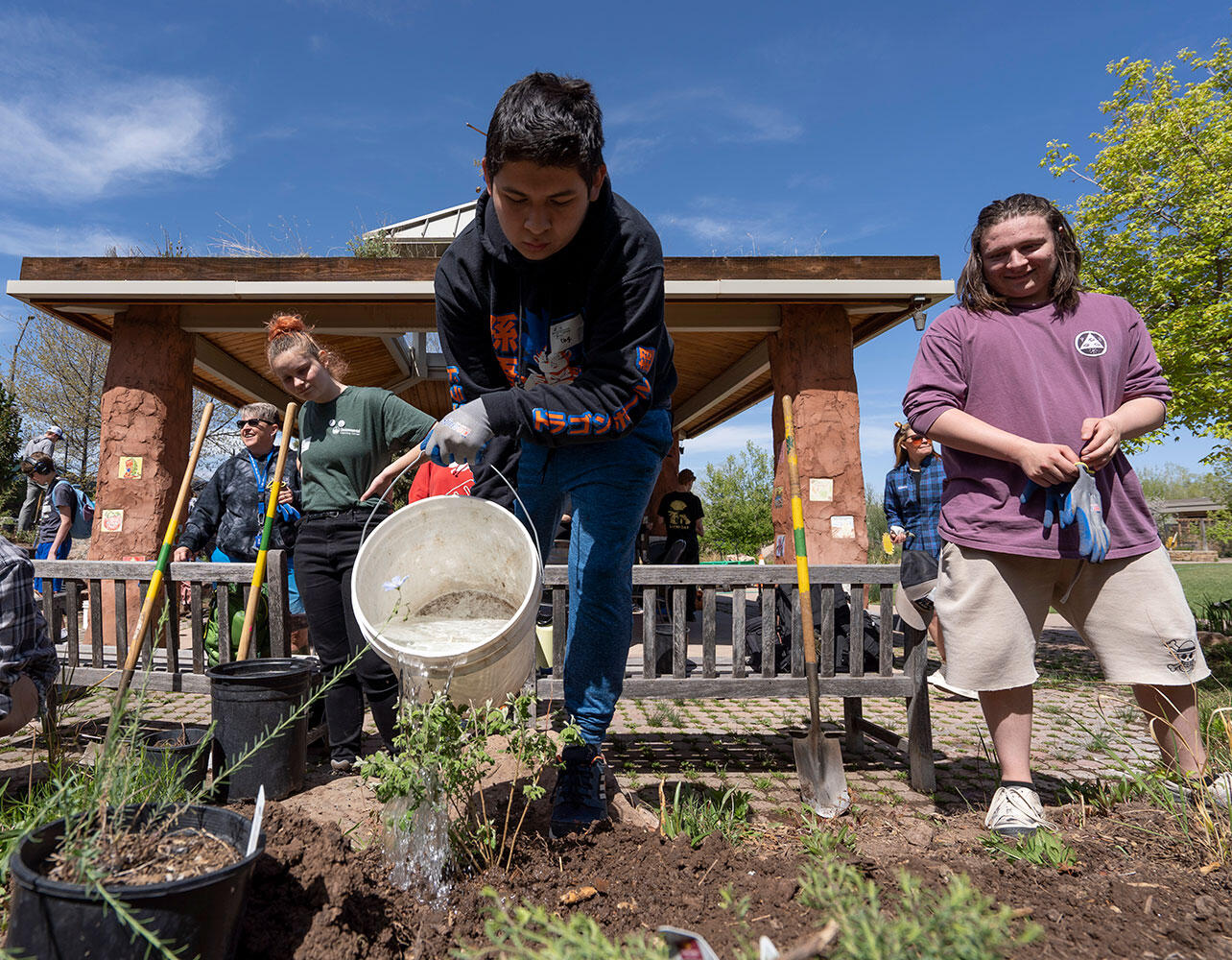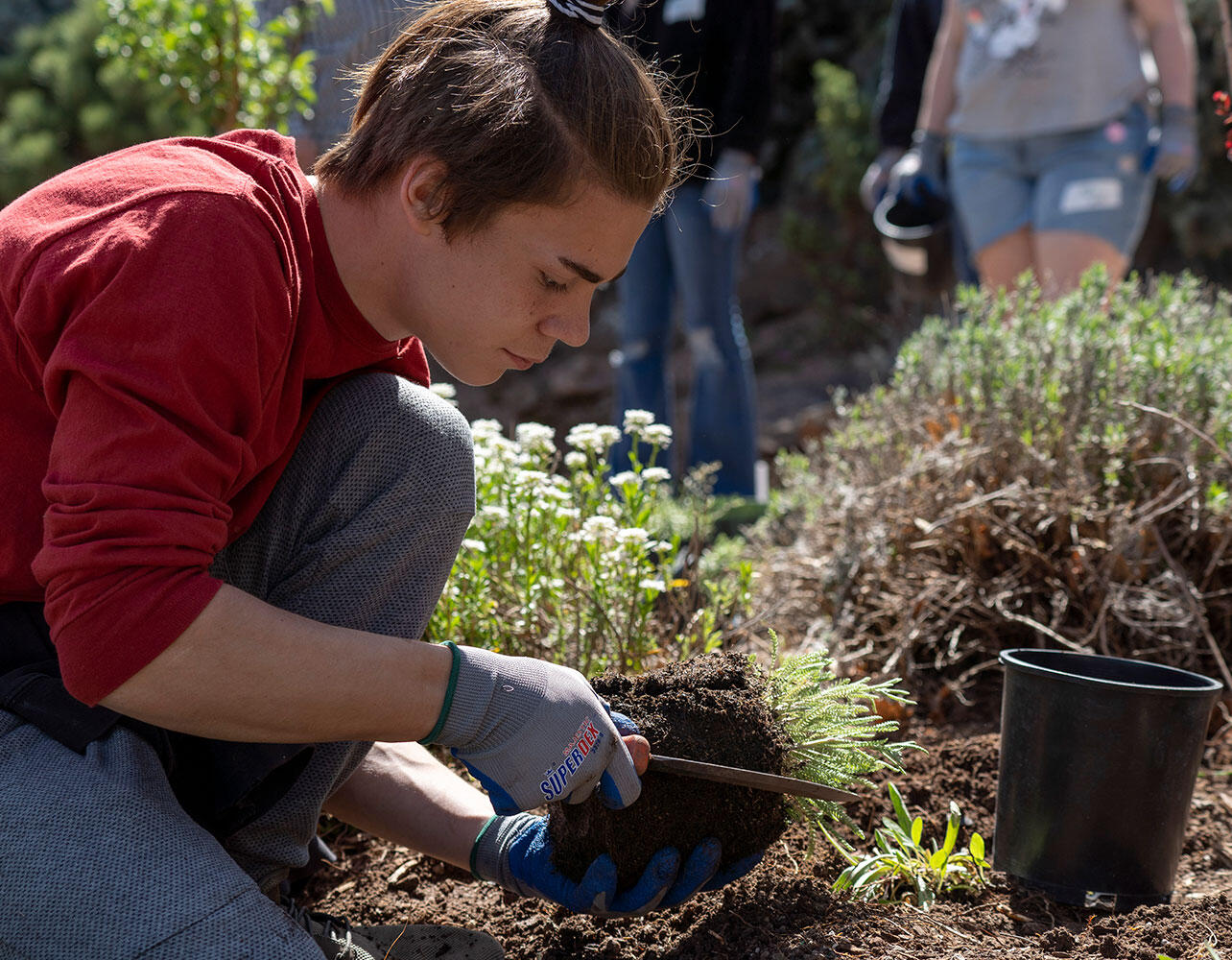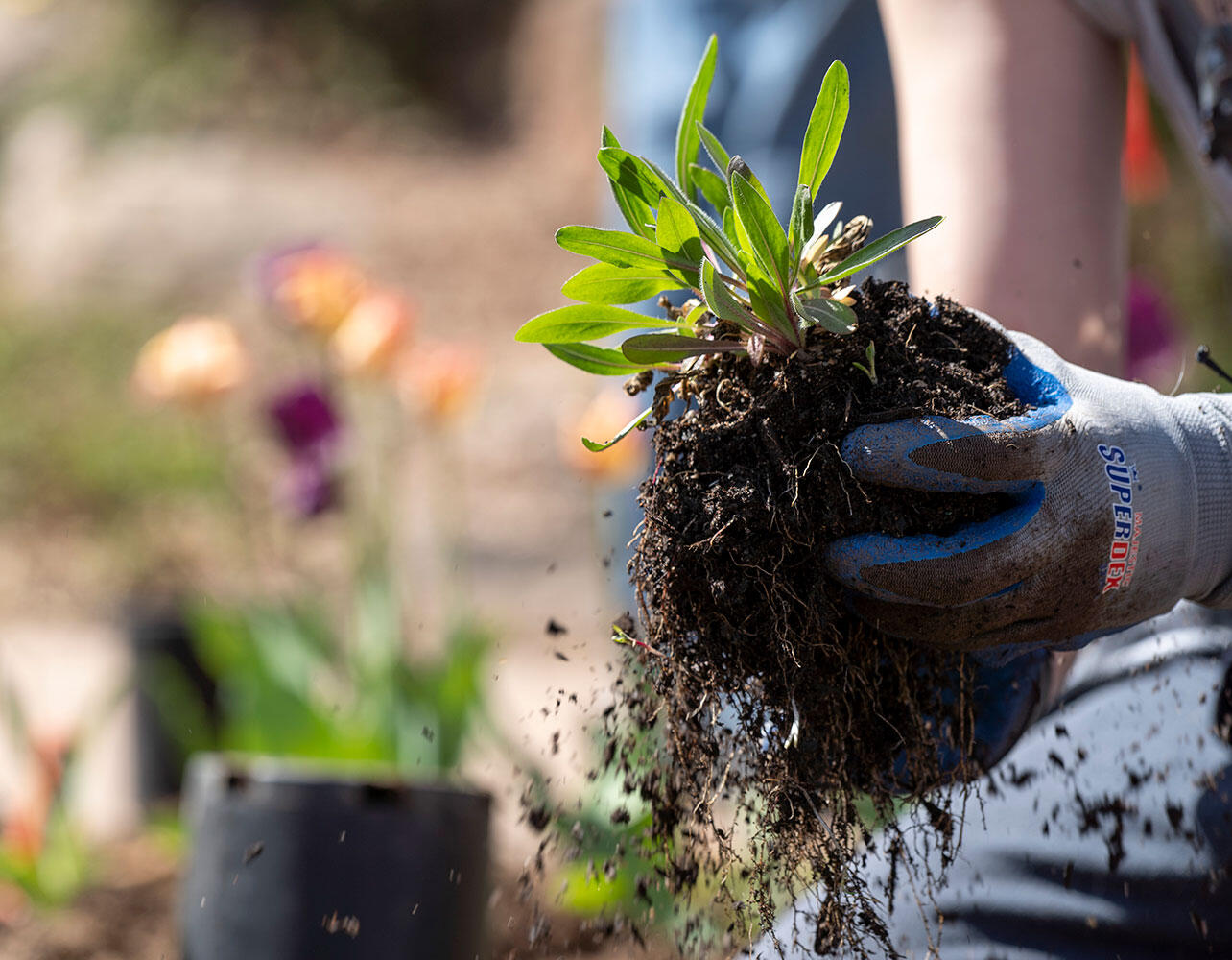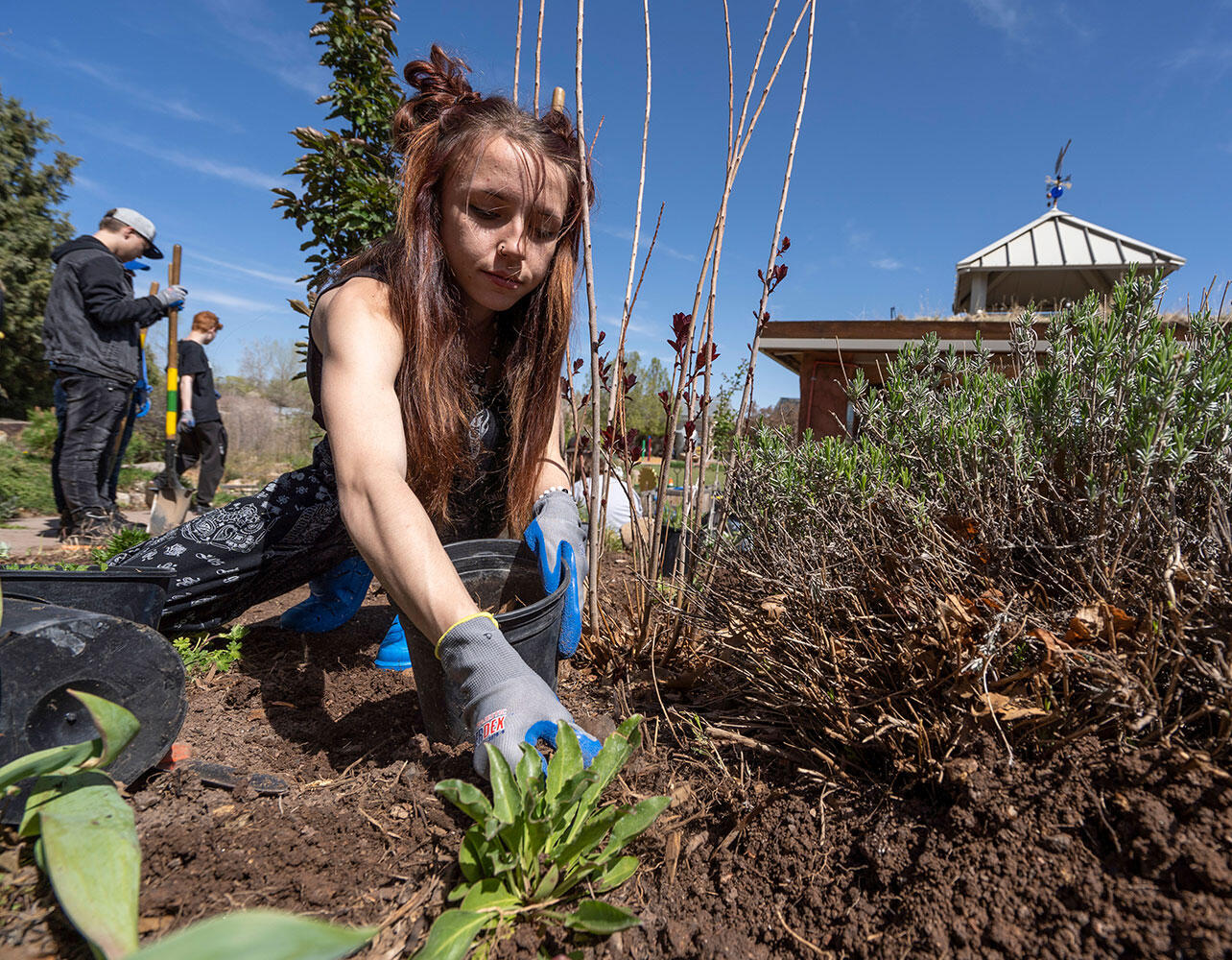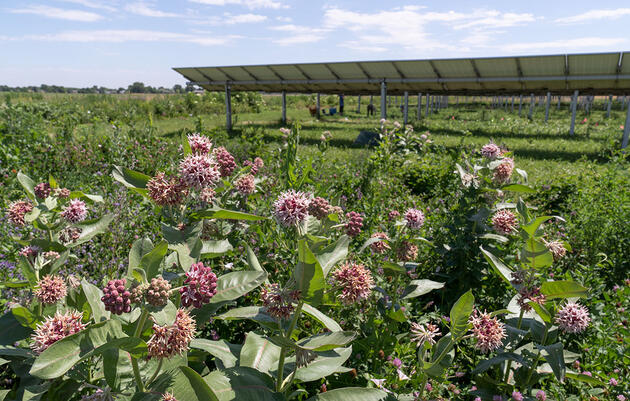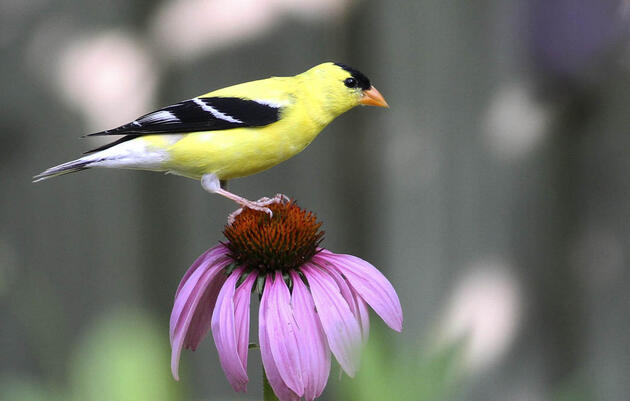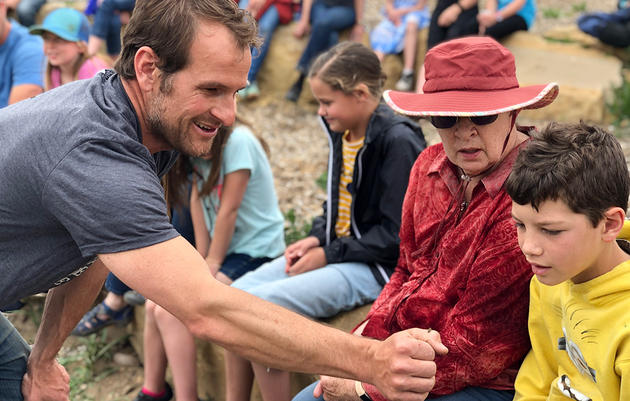“High school students are awesome and they can do really amazing projects,” Annemarie Fussell shouted over the sound of chirping birds and garden waterfalls. Annemarie, community relations coordinator for Wildlands Restoration Volunteers (WRV), was talking to the more than three dozen local high school students circled around her. The group had gathered at the Gardens on Spring Creek, the community botanic garden of Fort Collins, Colorado, to rejuvenate its Habitat Hero-certified Children’s Garden. The Children’s Garden, the oldest garden at the Gardens on Spring Creek, had overgrown and featured a lot of water-hungry plants. When Jacob Mares, the lead horticulturist overseeing the Children’s Garden, decided it was time for a refresh, he knew he wanted the renewed garden bed to be xeric, or drought-tolerant.
“I wanted to knock [the garden’s water needs] down to half of what we were using before,” he explained. Before the update, the Children’s Garden was being watered twice a week for “a pretty long time,” he said. Once the new plants are established (in about a year), the garden will only need to be watered once a week for a much shorter duration of time, even during the hot summer months. It’ll use half as much water, if not less, than before.
Having grown up on the southern plains of Wyoming and now living in northern Colorado, Jacob understands how every drop of water in the arid, drought-stricken West is worth saving. “With water restrictions and water shortages, we have to be planting stuff that’s xeric, stuff that’s native, stuff that can handle this, because we’re not going to have that water, eventually.”
But Jacob isn’t an “all doom and gloom guy,” as he put it, and he sees reasons to be hopeful. “I honestly think that you can create beautiful gardens with native, xeric plants,” he said, and more and more people are doing it. Gardening as a whole has become more popular over the past couple of years as people have searched out hobbies they could enjoy at home during the pandemic, and the Gardens on Spring Creek has seen a massive uptick in inquiries from the public about native and xeric gardening. The Habitat Hero Children’s Garden project showed that younger generations are interested in native gardening, too, and making tangible efforts to get involved. When the day came to refresh the Children’s Garden at the Gardens on Spring Creek, students from Poudre High School, Poudre Community Academy, and Centennial High School lined up to get their hands dirty and get plants in the ground.
“High schoolers can tend to be a little shy, but then you give them a shovel and a little while later, they’re sitting in the dirt planting plants being like, ‘Hey, you guys, let’s do this more efficiently. You dig the hole, I’m going to do the mulch, you go get the water,’” Annemarie observed. “It teaches them how to work as a group doing something that has tangible results.”
The high school students who helped with the Habitat Hero Children’s Garden were part of WRV’s Seeds of Stewardship Program. This program is designed to engage local youth in the process of ecological restoration within their communities. “Often, nonprofit restoration and environmental jobs have not represented the diversity of local communities,” noted Annemarie. “Part of WRV’s mission is to expand our community and to be inclusive. We feel that everyone has a right to be involved in the restoration of their wild lands. It shouldn’t be only for some. We need everyone in this solution because it impacts us all, and we all depend on these spaces.”
The Habitat Hero Children’s Garden planting that was the focus of this year’s Seeds of Stewardship program took over a year to plan and implement and involved six different nonprofit partners. The students got involved back in September 2021, when they visited the High Plains Environmental Center in Loveland, Colorado. There, with the help of WRV volunteer leaders, plant experts from the Colorado Native Plant Society, and student educators from the Environmental Learning Center (ELC) at Colorado State University, high school students from Poudre High School and Poudre Community Academy learned how to ethically source native seeds from the wild. These students then had three lessons throughout the school year, designed by WRV and taught by ELC student instructors, on basic botany; cleaning, planting, and germinating seeds; and transplanting plants.
“Even if we restore all of the open spaces and all of the protected lands that we have in this country to perfection… we still don’t have enough habitat for wildlife,” explained Annemarie. “Pollinators cannot fly from Rocky Mountain National Park to the next protected area. They can’t fly from Lory State Park to the Pawnee Grasslands because there’s not enough food in between.”
It was through discussing the importance of native plant gardens in urban and suburban areas that the Children’s Garden project came to be. When Audubon Rockies Habitat Hero Coordinator Jamie Weiss heard that WRV was looking for a garden where their student participants could plant the native plants they’d grown from seed, she knew the Children’s Garden at the Gardens on Spring Creek was the perfect place. After more than a year of planning and hard work, thirty-eight high school students and 12 volunteers from WRV, the ELC, Sunday Lawn Care, and Audubon Rockies gathered together one sunny morning in May to refresh the Habitat Hero-certified Children’s Garden at the Gardens on Spring Creek. They planted an astounding 214 individual plants from 19 different species, a majority of which were harvested and grown by the students in the Seeds of Stewardship program.
The rejuvenated garden provides a beautiful, functional landscape that’s great for birds, pollinators, and water conservation. It’s certified by our Habitat Hero program, which provides individuals, businesses, and cities with the resources they need to create bird habitat in their own communities. By planting bird-friendly gardens with native plants, not only are we creating more beautiful and water-efficient communities; we’re connecting people to nature while supporting birds, pollinators, and other wildlife.
The freshly planted Habitat Hero Children’s Garden at the Gardens on Spring Creek is open to the public, and we encourage you to visit and see just how beautiful and functional native plant gardens can be. You can also find resources for creating a bird-friendly garden and learn more about Habitat Hero on our website. To support the important work Habitat Hero does to spread the joy of birds and awareness around native gardening, please make a donation.
Audubon Rockies is grateful to everyone who helped design, grow, plant, and fund the Habitat Hero Children’s Garden at the Gardens on Spring Creek. Thank you to the students from Poudre High School, Poudre Community Academy, and Centennial High School, as well as our partners, the Gardens on Spring Creek, Wildland Restoration Volunteers, the CSU Environmental Learning Center, Sunday Lawn Care, High Plains Environmental Center, the Colorado Native Plant Society, and the Bohemian Foundation for making this project possible.

